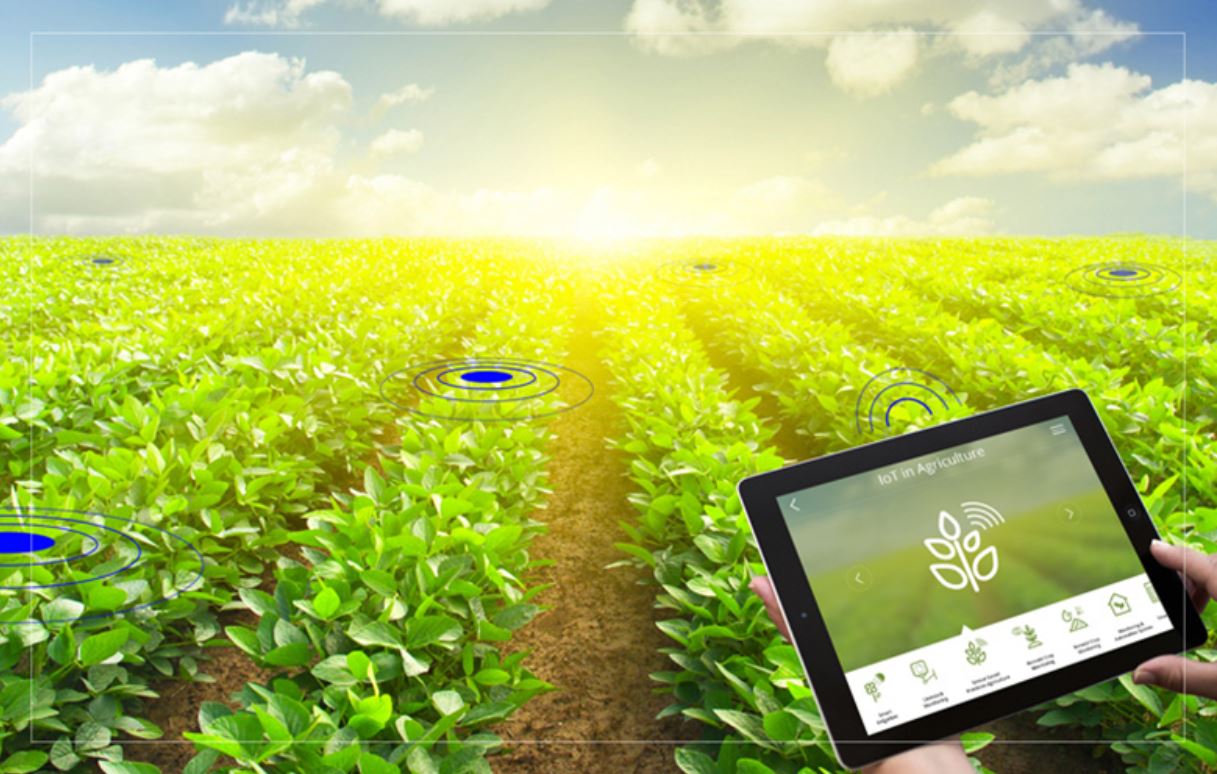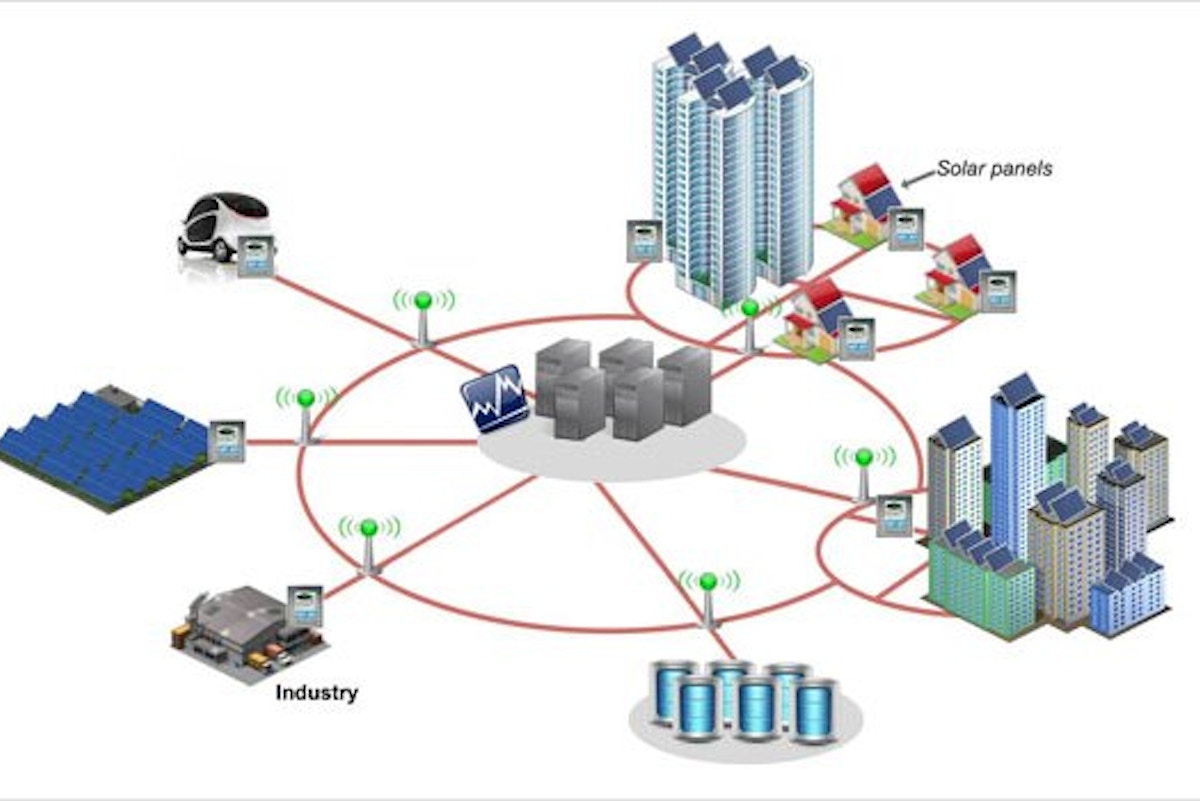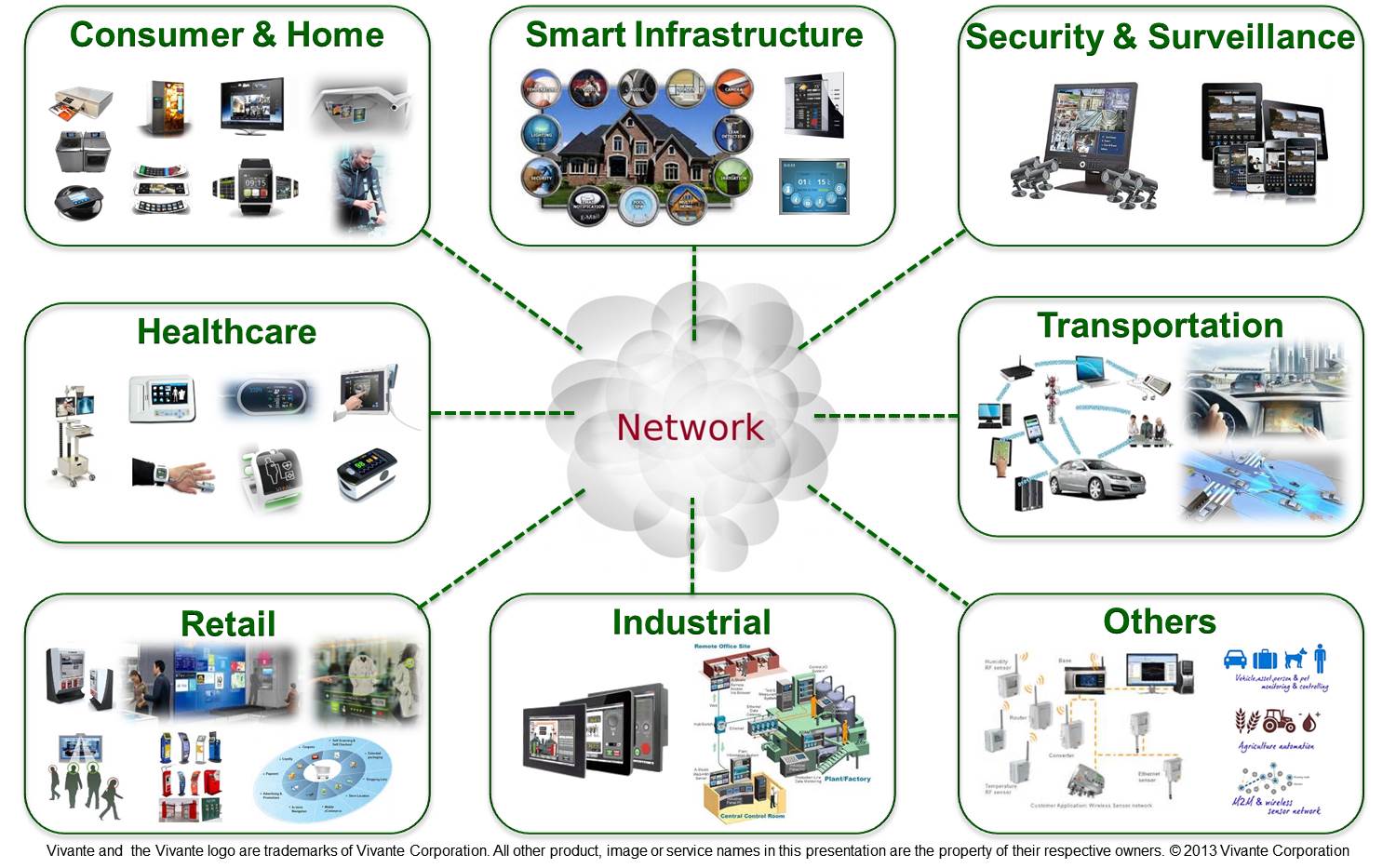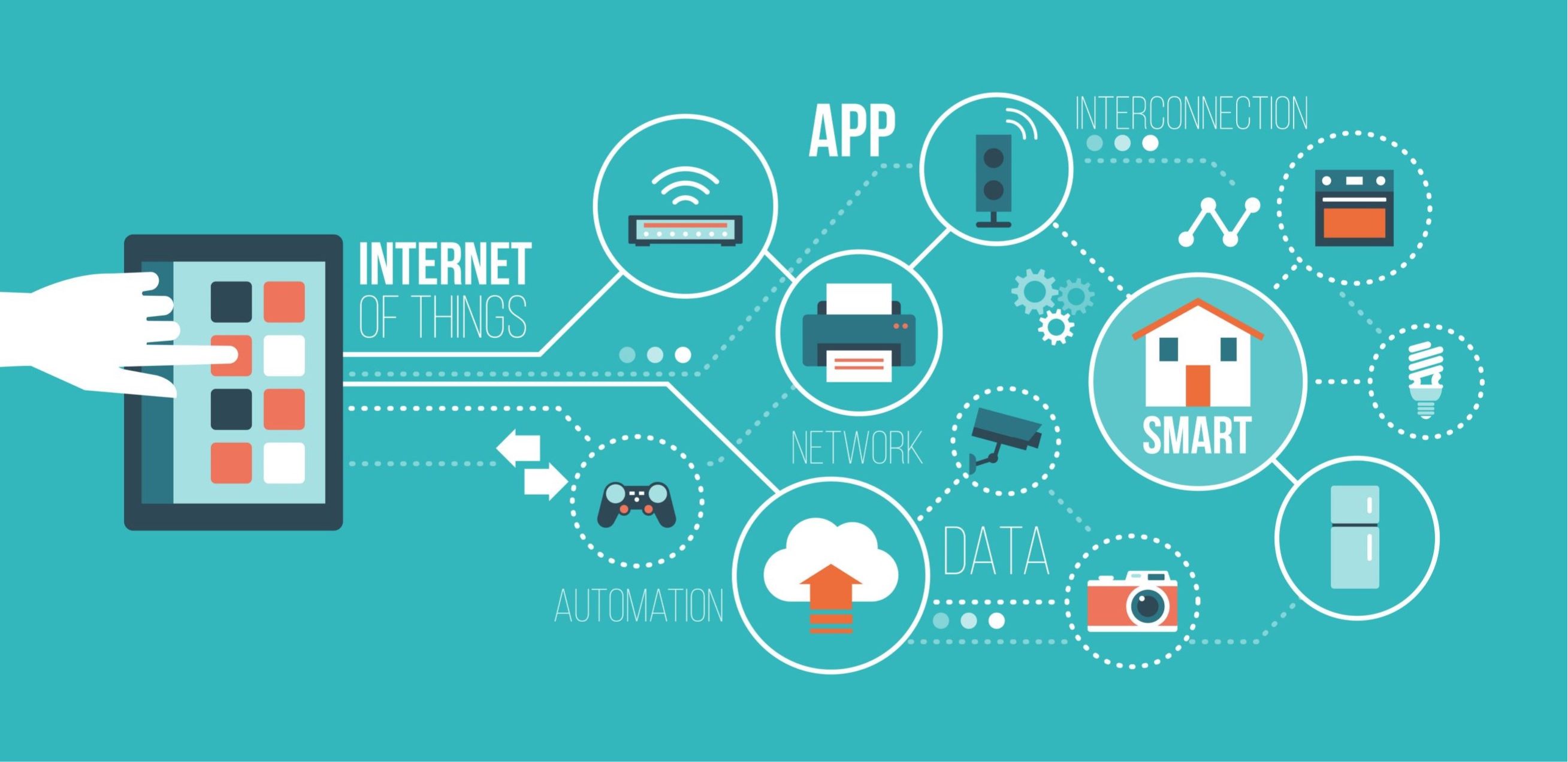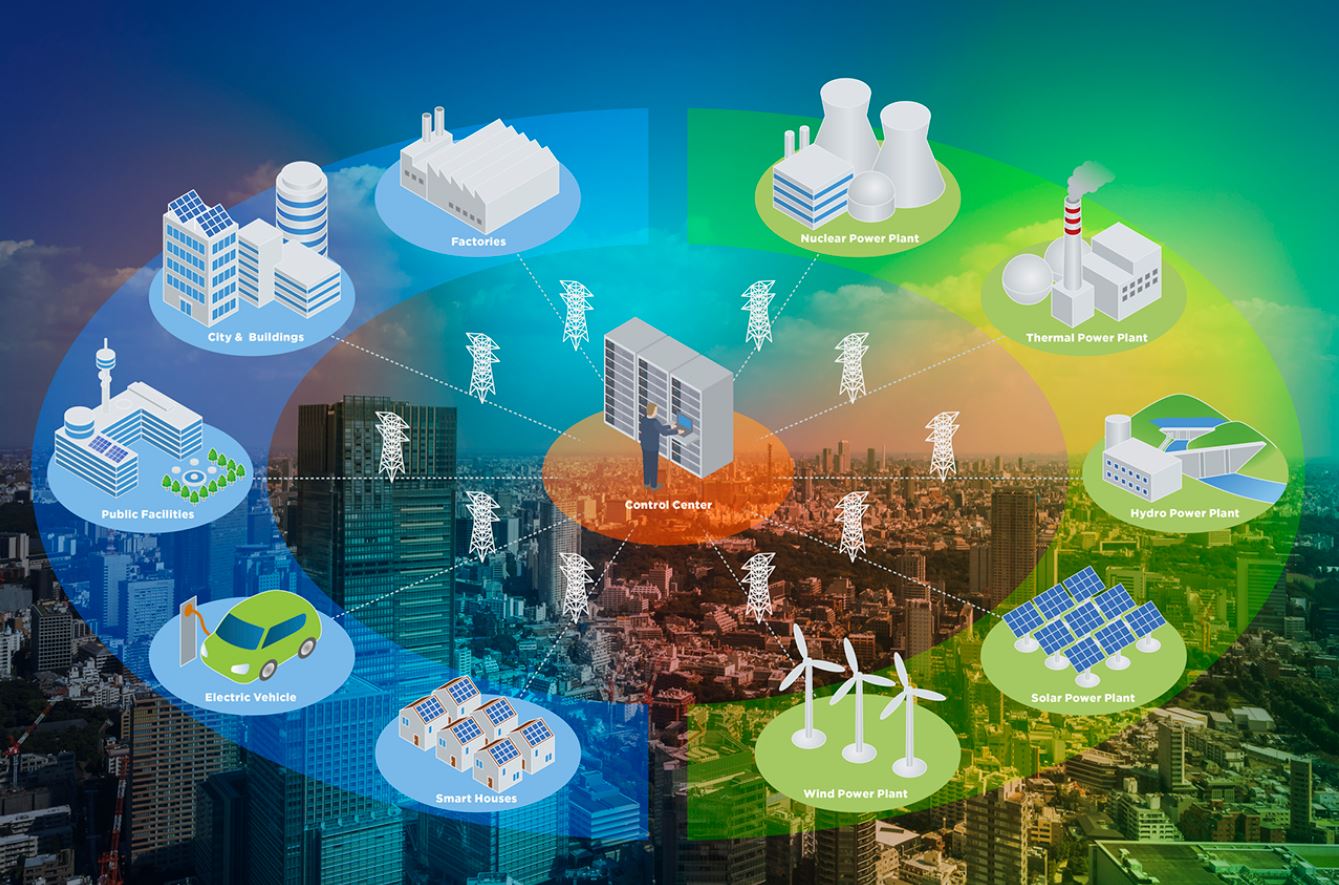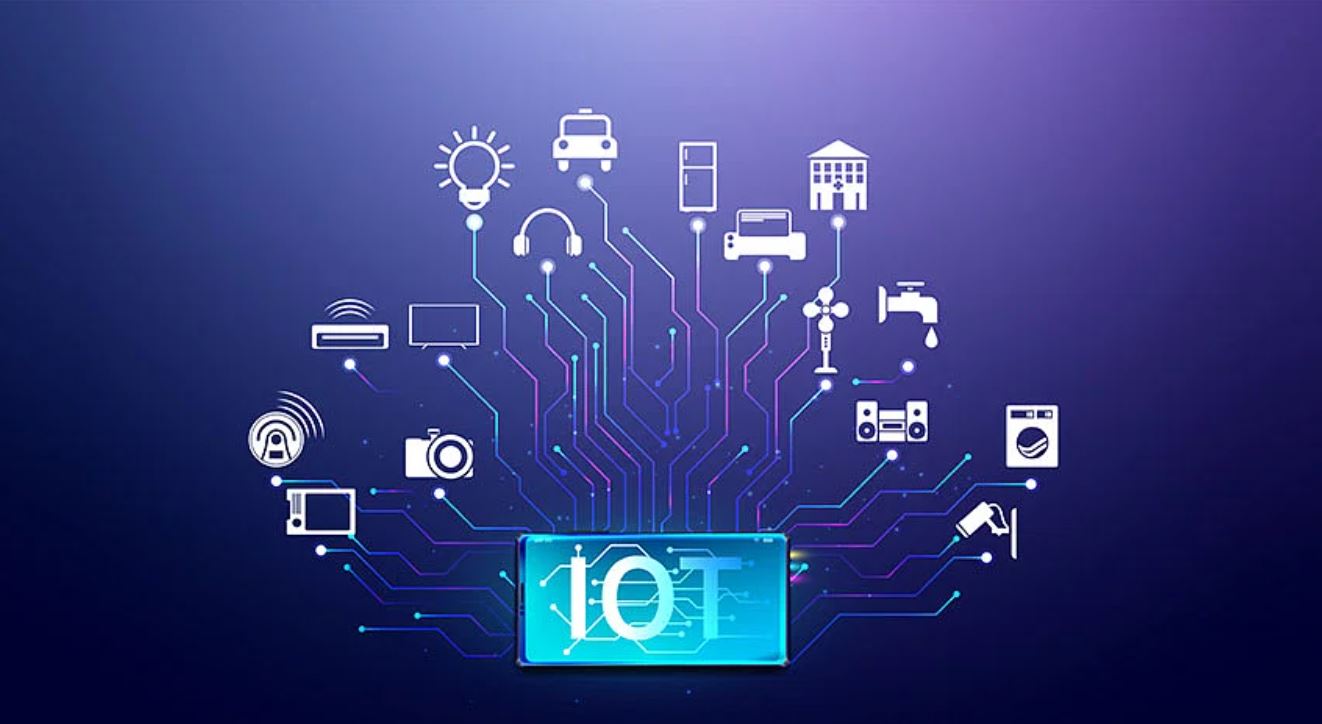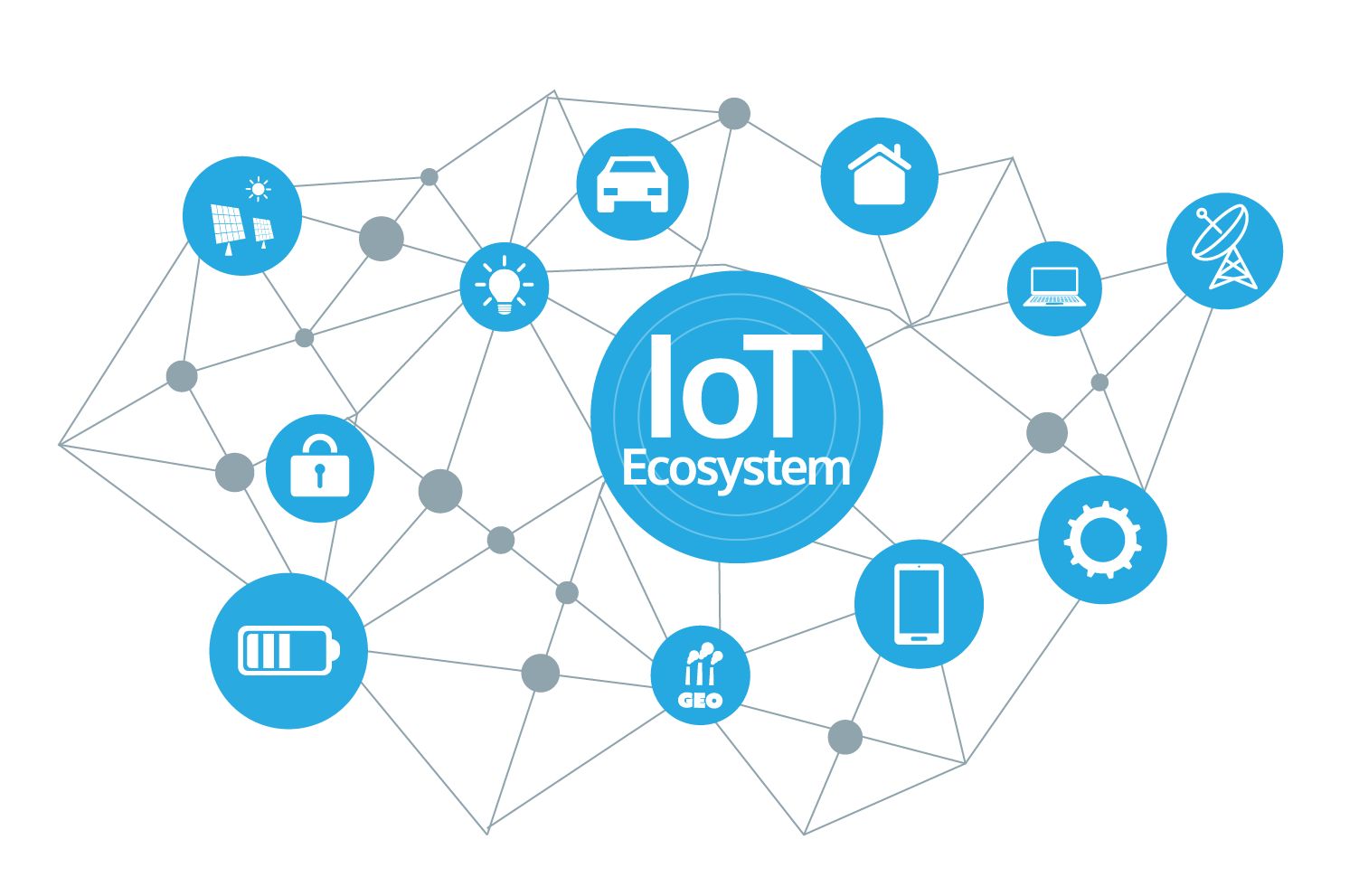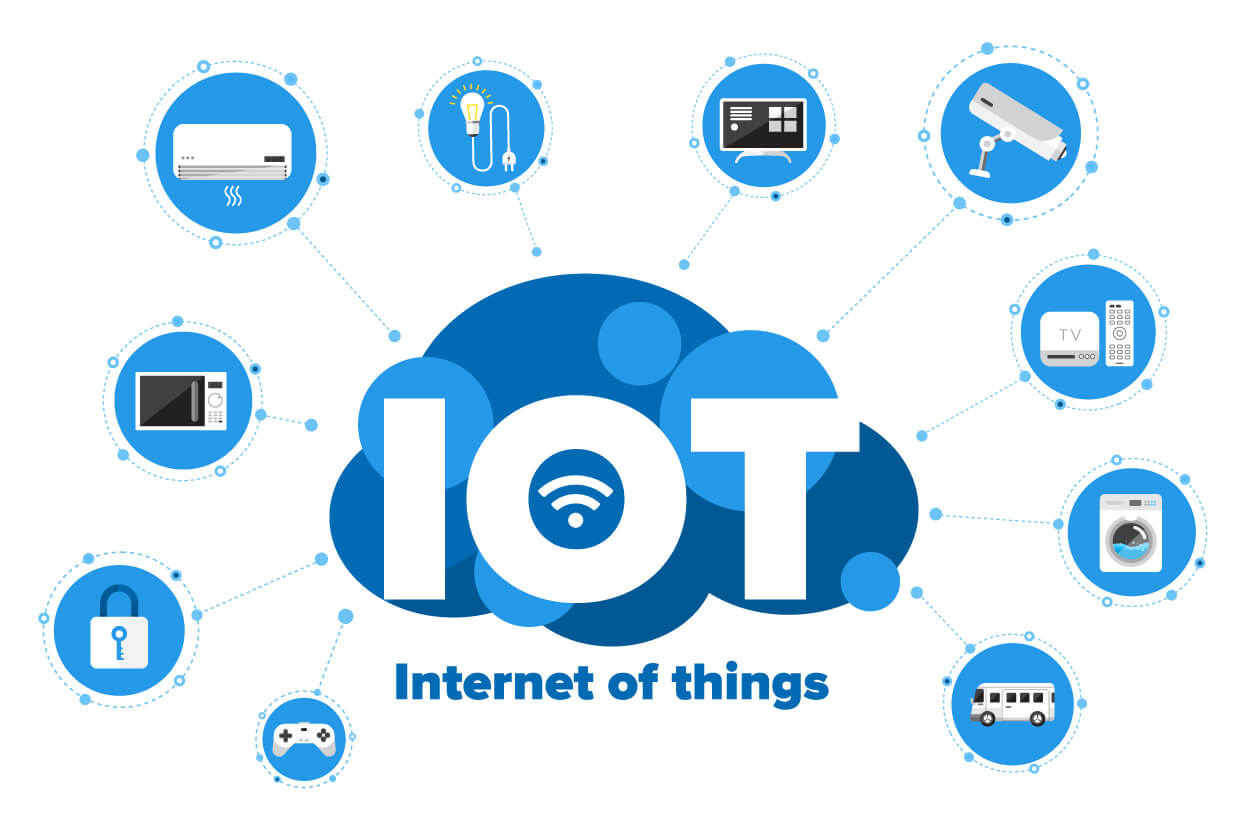Introduction
The Internet of Things (IoT) has emerged as a transformative technology in various industries, and one of its most promising applications is in agriculture. By connecting physical devices and sensors to the internet, IoT enables farmers to collect real-time data and make informed decisions to optimize their operations and improve productivity.
In traditional farming practices, farmers often rely on manual methods and intuition to manage their crops and livestock. However, with the advent of IoT, agriculture is being revolutionized with the introduction of smart farming techniques. These innovative practices leverage the power of IoT to monitor, manage, and automate various agricultural processes, ultimately leading to more efficient and sustainable farming.
The benefits of utilizing IoT in agriculture are numerous. It enables precision farming techniques, such as targeted pesticide application or customized irrigation, based on real-time data analysis. This can significantly reduce input costs and minimize environmental impact. Additionally, IoT allows farmers to monitor crop conditions, predict weather patterns, detect pests and diseases, and optimize supply chain logistics.
In this article, we will explore the key benefits of incorporating IoT in agriculture and delve into specific use cases that highlight how IoT technology is transforming the industry.
Benefits of IoT in Agriculture
The integration of IoT in agriculture brings numerous advantages that positively impact farmers, consumers, and the environment. Let’s explore some of the key benefits:
- Precision Agriculture: IoT technologies enable farmers to precisely manage their resources, such as water, fertilizers, and pesticides. Sensors and data analytics help monitor soil conditions, moisture levels, and crop health. This data-driven approach allows for targeted interventions, reducing waste and increasing yields.
- Crop Monitoring: IoT devices can monitor various factors that affect crop growth, including temperature, humidity, and light conditions. This real-time data enables farmers to identify and address issues promptly, such as nutrient deficiencies, diseases, or pests. Early detection and intervention can save crops from damage and optimize yields.
- Livestock Management: IoT technologies provide farmers with real-time insights into the health and behavior of their livestock. Wearable devices and sensors can track variables like temperature, heart rate, and feeding patterns. This data helps identify any abnormalities or distress signals early on, facilitating appropriate actions and improving animal welfare.
- Irrigation Control: IoT-based irrigation systems utilize data from sensors placed in the fields to optimize water usage. By monitoring soil moisture levels and weather conditions, automated irrigation systems can precisely deliver water when and where it is needed. This not only conserves water but also saves energy and reduces costs for farmers.
- Soil Monitoring: IoT devices equipped with soil sensors provide detailed information about soil quality, nutrient levels, and pH balance. This data allows farmers to implement targeted fertilization plans and soil amendments, ensuring optimal conditions for crop growth while minimizing the use of harmful chemicals.
- Weather Forecasting: IoT weather stations collect real-time weather data, such as temperature, rainfall, wind speed, and humidity. This information is invaluable for predicting weather patterns and making informed decisions on crop planting, harvesting, and pest control. Accurate weather forecasts help farmers mitigate risks and optimize their farm management strategies.
- Pest and Disease Detection: IoT sensors can detect the presence of pests or diseases in crops at an early stage. This early warning system allows farmers to take immediate action, such as targeted pesticide application or disease prevention measures, minimizing crop losses and reducing the need for chemical interventions.
- Supply Chain Optimization: IoT-enabled tracking systems can monitor the condition, location, and temperature of agricultural products throughout the supply chain. This improves traceability, reduces wastage, and ensures the delivery of high-quality produce to consumers. IoT technology enables farmers to optimize their logistics and streamline distribution processes.
These are just a few examples of how IoT is transforming agriculture. The seamless integration of data-driven technologies empowers farmers with critical information, enabling them to make informed decisions and optimize their operations for sustainable and efficient farming practices.
Precision Agriculture
Precision agriculture, also known as smart farming, is a key application of IoT in agriculture. It involves the use of advanced technologies to collect and analyze data, providing farmers with precise insights into their farming practices. By leveraging IoT devices and sensors, precision agriculture allows farmers to optimize the use of resources, reduce costs, and enhance crop yields.
IoT technologies enable farmers to monitor and manage their fields more accurately by collecting data on various environmental factors such as soil moisture, temperature, and nutrient levels. These sensors provide real-time information, enabling farmers to make data-driven decisions regarding irrigation, fertilization, and pest control.
The data collected by IoT devices is processed and analyzed using sophisticated algorithms, allowing farmers to detect patterns and trends that were previously difficult to identify. By understanding the specific needs of different areas within a field, farmers can apply targeted interventions, such as adjusting irrigation schedules or applying fertilizers only where necessary.
The benefits of precision agriculture are numerous. Farmers can optimize water usage by applying precise amounts of irrigation based on the specific needs of their crops. This not only conserves water, a scarce resource in many regions, but also reduces energy costs associated with pumping water for irrigation.
Precision agriculture also helps minimize the use of pesticides and fertilizers. By identifying areas of the field that require more or less input, farmers can customize their application, reducing the overall use of chemicals and minimizing their environmental impact. This targeted approach reduces costs for farmers while promoting sustainable farming practices.
Furthermore, IoT-powered precision agriculture allows farmers to monitor crop health and detect early signs of diseases or pest infestations. By using sensors and imaging technologies, farmers can detect anomalies in plant growth patterns or variations in leaf color, enabling them to take timely action to protect their crops.
Overall, precision agriculture revolutionizes traditional farming methods by leveraging IoT technologies to optimize resource usage, reduce waste, and increase productivity. It enables farmers to make informed decisions based on accurate data, resulting in sustainable farming practices, higher crop yields, and improved profitability.
Crop Monitoring
Crop monitoring is a critical aspect of modern agriculture, and IoT technology plays a pivotal role in enhancing the accuracy and efficiency of this process. With the help of IoT devices and sensors, farmers can continuously monitor the health, growth, and environmental conditions of their crops in real time.
IoT sensors placed in the fields collect data on various parameters such as temperature, humidity, light intensity, and soil moisture levels. These sensors transmit the collected data to a centralized system through wireless networks, allowing farmers to access and analyze the information from anywhere at any time.
The real-time data collected through crop monitoring enables farmers to make informed decisions and take proactive measures to optimize crop growth and yield. They can monitor factors like soil moisture levels and irrigation needs, ensuring that crops receive the right amount of water for optimal growth and minimizing water wastage.
Crop monitoring also helps farmers detect potential issues and diseases at an early stage. By closely monitoring factors such as leaf moisture, temperature, and humidity, farmers can detect signs of stress, nutrient deficiencies, or pest infestations. Early detection allows for timely interventions and targeted treatments, minimizing crop damage and reducing the need for excessive pesticide use.
Additionally, crop monitoring enables farmers to track the growth and development of their crops more accurately. They can monitor key growth parameters such as plant height, leaf area, and flowering patterns, allowing for precise predictions of harvest times and yield estimations. This information helps farmers plan their harvesting schedules and optimize their operations.
Furthermore, crop monitoring provides valuable insights into the impact of weather conditions on crop growth. By monitoring weather data alongside crop data, farmers can identify correlations between certain weather patterns and crop performance. This information helps them adapt their farming practices and mitigate the risks associated with adverse weather conditions.
In summary, crop monitoring through IoT devices and sensors empowers farmers with real-time data on the health, growth, and environmental conditions of their crops. It enables farmers to make data-driven decisions, optimize resource allocation, and implement timely interventions, resulting in improved crop yield, reduced waste, and more sustainable farming practices.
Livestock Management
Livestock management is a crucial aspect of the agricultural industry, and IoT technology offers significant benefits in optimizing the health, well-being, and productivity of livestock. By leveraging IoT devices and sensors, farmers can gather real-time data on the behavior, health, and environmental conditions of their animals, enabling them to make informed decisions and improve overall livestock management.
IoT devices, such as wearable sensors and GPS trackers, can be applied to monitor various aspects of livestock health. These sensors collect data on parameters like body temperature, heart rate, feeding patterns, and activity levels. This data is transmitted to a centralized system, allowing farmers to track and analyze the well-being of their animals.
One of the key advantages of IoT in livestock management is the early detection of health issues. By continuously monitoring the vital signs of animals, farmers can identify signs of illness or distress at an early stage. This enables prompt intervention, such as timely medical treatment or adjustments to feed and nutrition, reducing the risk of disease spread and improving overall animal health.
IoT technology also facilitates improved animal welfare. Livestock sensors can track parameters such as temperature, humidity, and ventilation, ensuring that animals are housed in optimal conditions. Real-time monitoring allows farmers to take preventive measures during extreme weather conditions, ensuring the well-being of their animals. Additionally, IoT devices can detect behavioral changes in livestock, signaling signs of stress or discomfort.
Moreover, IoT enables precise feeding and nutrition management. Sensors can track feed consumption and nutritional intake, providing farmers with data to optimize feeding strategies. This ensures that animals receive the right quantity and quality of feed, promoting overall health and productivity.
Another benefit of IoT in livestock management is the ability to track animal movements and behavior. GPS trackers can be attached to animals, enabling farmers to monitor grazing patterns, prevent theft or escape, and locate animals in case of emergencies. This enhanced traceability promotes better herd management and reduces the chances of losing valuable livestock.
Overall, IoT technologies in livestock management empower farmers with real-time insights into the health, behavior, and well-being of their animals. By utilizing IoT devices and sensors, farmers can improve disease management, enhance animal welfare, optimize feeding strategies, and ensure the safety and security of their livestock, resulting in more efficient and sustainable livestock farming practices.
Irrigation Control
Irrigation is a critical aspect of agriculture, and IoT technology has revolutionized the way farmers manage water resources through precise irrigation control. By utilizing IoT devices and sensors, farmers can monitor soil moisture levels, weather conditions, and crop water requirements in real time, enabling them to optimize water usage and improve irrigation efficiency.
IoT irrigation systems incorporate sensors that measure soil moisture at different depths. These sensors transmit data wirelessly to a central system, providing farmers with accurate information about the moisture content of the soil. By analyzing this data, farmers can determine the exact water requirements of their crops and avoid both over-irrigation and under-irrigation.
The real-time data collected by IoT devices allows farmers to fine-tune their irrigation schedules and adjust water delivery based on the specific needs of each crop. This targeted approach ensures that crops receive the optimal amount of water at the right time, leading to improved plant growth and maximum water-use efficiency.
Furthermore, IoT irrigation control systems can factor in weather data to make informed decisions about irrigation. By integrating weather forecasts, farmers can adjust their irrigation plans based on predicted rainfall or changes in temperature. This helps prevent unnecessary watering if rain is expected and ensures that crops receive adequate irrigation during periods of drought.
In addition to water conservation and improved water-use efficiency, IoT-enabled irrigation control systems offer other benefits. They reduce labor requirements by automating the irrigation process, saving farmers time and effort. The systems can also be set to operate during off-peak hours, optimizing energy consumption and reducing electricity costs associated with pumping water.
Moreover, IoT irrigation control systems enable remote monitoring and control. Farmers can access the system through a mobile app or a web-based interface, allowing them to monitor and adjust irrigation settings from anywhere, at any time. This flexibility enhances the convenience and effectiveness of irrigation management, particularly for large-scale farms or farms with multiple irrigation zones.
By optimizing irrigation control using IoT technology, farmers can conserve water, reduce costs, and maximize crop yields. The ability to provide crops with the right amount of water at the right time improves overall farm sustainability and resource management, contributing to more efficient and environmentally friendly agricultural practices.
Soil Monitoring
Soil health is crucial for successful crop production, and IoT technology has emerged as a valuable tool for continuous soil monitoring. Through the use of IoT devices and sensors, farmers can gather real-time data on soil quality, nutrient levels, pH balance, and other essential parameters. This data-driven approach enables farmers to make informed decisions about soil management, leading to improved crop health and overall productivity.
IoT sensors deployed in the field collect data on various soil parameters, such as moisture content, temperature, electrical conductivity, and nutrient levels. This data is transmitted wirelessly to a centralized system, where it is analyzed and processed. With the help of soil monitoring systems, farmers can access detailed information about the fertility and health of their soil, allowing them to implement targeted soil management strategies.
By monitoring soil moisture levels in real time, farmers can optimize irrigation practices and prevent overwatering or underwatering. This not only conserves water but also helps maintain proper soil structure and nutrient availability. Additionally, IoT-based soil monitoring systems provide insights into the distribution of moisture across different areas of the field, enabling farmers to adjust irrigation schedules and methods accordingly.
Furthermore, soil monitoring systems assist in the optimization of nutrient management. By continuously monitoring nutrient levels in the soil, farmers can determine the precise requirements of their crops and apply fertilizers more efficiently. This targeted approach minimizes fertilizer waste, reduces environmental impact, and ensures that crops receive the appropriate nutrients for healthy growth.
IoT technology also facilitates soil pH monitoring, which is crucial for proper nutrient uptake by plants. By analyzing pH data, farmers can make adjustments to soil acidity or alkalinity levels, creating an optimal pH range for different crops. This helps prevent nutrient deficiencies or toxicities, resulting in improved crop growth and yield.
Additionally, IoT soil monitoring systems provide insights into soil compaction and erosion. By monitoring changes in soil density and analyzing erosion patterns, farmers can take preventive measures to combat soil degradation. This may include implementing conservation practices, adjusting tillage strategies, or employing cover crops to improve soil structure and prevent erosion.
In summary, soil monitoring through IoT devices and sensors empowers farmers with real-time data on soil health and fertility. By leveraging this information, farmers can make data-driven decisions regarding irrigation, fertilizer application, pH adjustments, and erosion prevention. This enables them to optimize soil conditions, maximize crop productivity, and ensure sustainable farming practices in the long term.
Weather Forecasting
Weather plays a crucial role in agriculture, and IoT technology has revolutionized weather forecasting for farmers. By leveraging IoT weather stations and data analytics, farmers can access real-time weather data, forecasts, and historical trends, enabling them to make informed decisions and better plan their farming operations.
IoT weather stations equipped with sensors capture various weather parameters, such as temperature, humidity, wind speed, rainfall, and solar radiation. These stations continuously monitor and transmit this data to a centralized system for analysis and interpretation.
The availability of accurate and up-to-date weather forecasts enables farmers to adapt their farming practices based on predicted weather patterns. They can plan for optimal planting schedules, adjust irrigation plans, and take precautionary measures to protect crops from extreme weather events like storms or frost.
By integrating IoT weather data with crop data, farmers can identify correlations between specific weather conditions and crop performance. This allows them to make informed decisions on crop selection, variety choice, and cultivation practices. For example, certain crops may be more suited to withstand high temperatures, while others may need shelter during heavy rainfall.
Moreover, IoT weather data helps farmers in disease and pest management. Weather parameters like temperature, humidity, and rainfall influence the development and spread of diseases and pests. By monitoring and analyzing the weather data, farmers can predict disease and pest outbreaks, implement preventive measures, and apply targeted treatments when necessary.
IoT weather forecasting also contributes to effective water management. By incorporating weather data into irrigation plans, farmers can adjust their irrigation schedules based on predicted rainfall or changes in temperature. This prevents over-irrigation and reduces water waste, improving water-use efficiency and conserving this valuable resource.
Additionally, access to historical weather data enables farmers to analyze long-term trends and patterns. This information helps them make informed decisions about crop suitability, adapt farming practices to changing climate conditions, and implement strategies for climate resilience.
In summary, IoT weather forecasting equips farmers with real-time weather data, forecasts, and historical trends. This enables them to make data-driven decisions regarding planting, irrigation, pest control, and disease management, leading to improved crop yields, optimized resource usage, and reduced risks associated with adverse weather conditions.
Pest and Disease Detection
Pest and disease management is a critical aspect of agriculture, and IoT technology has revolutionized the way farmers monitor and detect pests and diseases in their crops. By leveraging IoT devices, sensors, and data analytics, farmers can detect early signs of infestations or disease outbreaks, enabling them to take timely and targeted actions to minimize crop damage.
IoT sensors and imaging technologies play a crucial role in monitoring crops for pest and disease presence. These sensors can detect anomalies in plant growth patterns, leaf color variations, or signs of stress. They provide real-time data on the health status of crops, helping farmers identify and diagnose potential issues promptly.
When combined with AI-powered image recognition algorithms, IoT sensors enable automated pest and disease detection. By analyzing images of crops, these algorithms can identify specific pests or diseases, such as aphids, mites, or plant pathogens. This automated detection speeds up the process, allowing farmers to take immediate action to limit the spread and minimize the impact on crop yield.
Early detection of pests and diseases through IoT technology allows farmers to implement targeted interventions. Instead of applying pesticides or treatments to the entire field, farmers can apply them specifically to the affected areas. This reduces the amount of chemicals used and minimizes the potential harm to beneficial insects, wildlife, and the environment.
Furthermore, IoT devices and sensors allow for continuous monitoring of pest and disease presence. They can provide real-time data on pest populations or disease progression, enabling farmers to adjust their management strategies accordingly. This proactive approach facilitates the implementation of integrated pest management (IPM) practices, which rely on eco-friendly and sustainable methods to control pests and diseases.
By integrating pest and disease data with soil, weather, and crop data, IoT technology offers a holistic view of the farm’s health. Farmers can identify correlations between specific environmental conditions, such as temperature, humidity, or nutrient levels, and the occurrence of pests or diseases. This information helps farmers make informed decisions on preventive measures and adapt their farming practices to mitigate future risks.
In summary, IoT technology enhances pest and disease detection in agriculture by providing real-time crop health monitoring, automated pest recognition, and continuous data collection. By leveraging this technology, farmers can detect infestations or diseases early, implement targeted interventions, and optimize their pest and disease management strategies. This results in reduced crop losses, minimized environmental impact, and improved overall crop health and productivity.
Supply Chain Optimization
The integration of IoT technology in agriculture not only enhances on-farm operations but also revolutionizes the efficiency and effectiveness of the entire supply chain. By leveraging IoT devices, farmers and stakeholders can optimize various processes, including production, storage, transportation, and distribution, resulting in improved supply chain management and increased customer satisfaction.
IoT devices enable real-time tracking and monitoring of agricultural products throughout the supply chain. From the moment produce is harvested or livestock is processed, sensors can monitor factors such as temperature, humidity, and location. This data is transmitted and stored in a centralized system, providing stakeholders with valuable insights into the condition and whereabouts of the products.
Real-time monitoring enables stakeholders to intervene promptly in case of any deviations from pre-set quality or environmental conditions. For example, if the temperature of a refrigerated truck carrying perishable goods exceeds the optimal range, stakeholders can receive automated alerts and take corrective actions to prevent spoilage.
The transparency and traceability provided by IoT technology enable stakeholders to ensure product quality and safety. With the ability to track products from farm to table, it becomes easier to identify and address any potential issues or recalls. This fosters trust and consumer confidence in the agricultural supply chain.
IoT also facilitates optimized inventory management by providing accurate and up-to-date data on product levels. Farmers and distributors can monitor stock levels in real time, enabling them to optimize storage space, reduce waste, and ensure a constant supply of products to meet market demands.
Additionally, IoT technology improves transportation logistics. Sensors placed on vehicles can provide real-time data on routes, traffic conditions, and other key factors. This information helps optimize routing and scheduling, reducing transportation costs, decreasing delivery times, and improving overall efficiency.
Furthermore, the integration of IoT devices in supply chain management supports demand forecasting and inventory planning. By analyzing historical data, market trends, and customer preferences, stakeholders can make accurate predictions about demand fluctuations. This enables them to adjust production levels and manage inventory to meet customer needs more effectively.
In summary, IoT technology in agriculture enables supply chain optimization through real-time monitoring, transparency, traceability, and data-driven decision-making. By leveraging IoT devices and data analytics, stakeholders can improve product quality, reduce waste, optimize inventory management, streamline transportation logistics, and enhance overall supply chain efficiency, ultimately leading to increased customer satisfaction and profitability.
Conclusion
The integration of IoT technology in agriculture has brought about significant advancements in the way farming operations are managed. From precision agriculture to supply chain optimization, IoT has revolutionized the industry by providing farmers with real-time data, remote monitoring capabilities, and data-driven decision-making tools.
Through precision agriculture, farmers can optimize the use of resources such as water, fertilizers, and pesticides. By leveraging IoT devices and sensors, farmers can monitor and manage their fields more accurately, resulting in reduced costs, minimized environmental impact, and increased crop yields.
Crop monitoring, facilitated by IoT technology, enables farmers to closely monitor the health and growth of their crops. Real-time insights into parameters such as temperature, humidity, and soil moisture levels allow farmers to take proactive measures, detect nutrient deficiencies or pest infestations early, and optimize crop growth for maximum productivity.
Livestock management has also greatly benefited from IoT implementation. Farmers can now monitor the health and behavior of their animals in real time, facilitating early detection of issues and promoting animal welfare. Through IoT, precise feeding and nutrition management can be achieved, leading to improved livestock health and productivity.
Irrigation control has been revolutionized by IoT, enabling farmers to optimize water usage based on real-time data on soil moisture levels, weather forecasts, and crop water requirements. This results in both water conservation and improved crop yield.
Soil monitoring allows farmers to continuously assess soil quality, nutrient levels, and pH balance. By leveraging IoT devices and sensors, farmers can implement targeted soil management strategies, optimizing fertilization, reducing chemical usage, and improving overall soil health.
Moreover, IoT technology has transformed weather forecasting in agriculture, enabling farmers to make more informed decisions based on real-time weather data, forecasts, and historical trends. This helps them adapt their farming practices to mitigate risks and optimize resource allocation.
Pest and disease detection have been greatly enhanced through IoT, providing farmers with early detection capabilities and allowing for targeted interventions. By monitoring crops and analyzing data, farmers can implement proactive pest and disease management strategies, minimizing crop losses and reducing the use of harmful chemicals.
Furthermore, IoT integration in the agricultural supply chain has improved efficiency and transparency. Stakeholders can monitor the condition and location of agricultural products in real time, optimize inventory management, and streamline transportation logistics, ensuring the delivery of high-quality produce to consumers.
In conclusion, the integration of IoT technology in agriculture has revolutionized the industry, enhancing productivity, sustainability, and profitability. By leveraging real-time data, remote monitoring capabilities, and data analytics, farmers can make informed decisions, optimize resource usage, and implement more efficient and sustainable farming practices. As technology continues to advance, the role of IoT in agriculture will only become more prominent, paving the way for a more sustainable and productive future for the industry.







